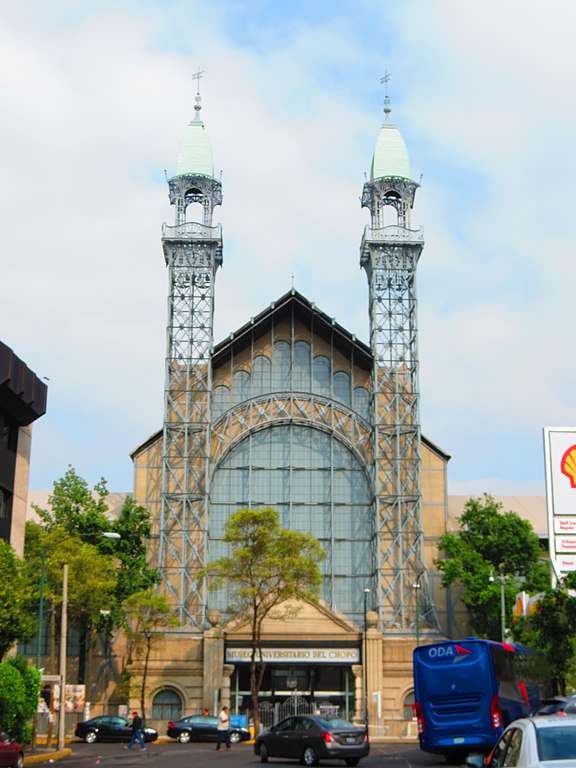
The Museo del Chopo, more formally the Museo Universitario del Chopo, or simply “El Chopo” is a long-time museum favorite. The 2004 – 2010 remodeling of the building left the neighborhood at a standstill in breathless anticipation.
In fact, the remodeling ended up being a seminal event for the entire area. The Museo del Chopo is constantly well-attended and a favorite for city residents. and visitors alike. Regular exhibitions include deep intersections with contemporary and alternative cultures, as well as arts, photography, contemporary thinking, and video.
Designed in the German Jugendstil style by Bruno Möhring, the building was prefabricated and disassembled, and reassembled several times prior to its arrival in Santa Maria. It was originally intended to be the machine shop of the metallurgical Gutehoffnungshütte (Good Hope Mine). An inscription still appears on of the building’s joists. Made entirely of iron and glass, the building originally housed a 1902 Exhibition of Textile Art and Industry in Düsseldorf.
Afterward, a Mexican businessman, José Landero y Coss, bought most of the original building and had it re-assembled in Mexico City. In 1905, the Landero y Coss company declared bankruptcy. By 1909, the Secretary of Public Instruction and Fine Arts signed a lease to take over the building. It was known then as “The Crystal Palace,” after its counterpart in London.
In the waning hours of the Porfirio Díaz presidency, the Centenary celebrations of Mexican Independence began to expand. The Secretary of Public Instruction then lent the building to a Japanese delegation to host an exhibition of Industrial Arts. It was then popularly known as “The Japanese Pavilion.” In 1913, the National Museum of Natural History opened inside with exhibitions of Botany, Zoology, Biology, Mineralogy and Geology.
With the close of the Revolution, the government of Venustiano Carranza, however, eliminated the Secretariat of Public Instruction and Fine Arts. They placed the collection under the direction of the General Directorate of Biological Studies. This directorate was, in 1929, re-integrated into the National Autonomous University (UNAM) as the Institute of Biology. Receiving some 1,200 visitors per day until the mid-1960s, it was nearly always the best-attended museum in the city.
By 1964, the building was in bad shape, and basically abandoned. It was to remain vacant until 1973 when a Federal Law on Public Monuments was enforced and the UNAM began a restoration process.
This successful rehabilitation led to the museum’s central place in the culture of the City, and especially for young people. The museum focused increasingly on popular forms, visual arts, literature, film and music. Restored again, between 2004 and 2010, it’s been a lively part of the museum and gallery scene ever since.
Hours: Wednesday through Sunday, 11:30 a.m. to 6 p.m.
 +52 (55) 5546 3471
+52 (55) 5546 3471
 http://www.chopo.unam.mx/
http://www.chopo.unam.mx/
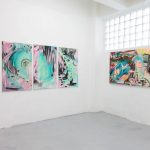
Nearest at 0.08 kms.
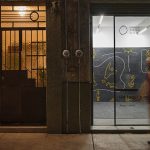
Nearest at 0.18 kms.
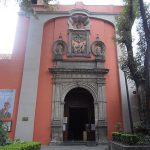
Nearest at 0.26 kms.
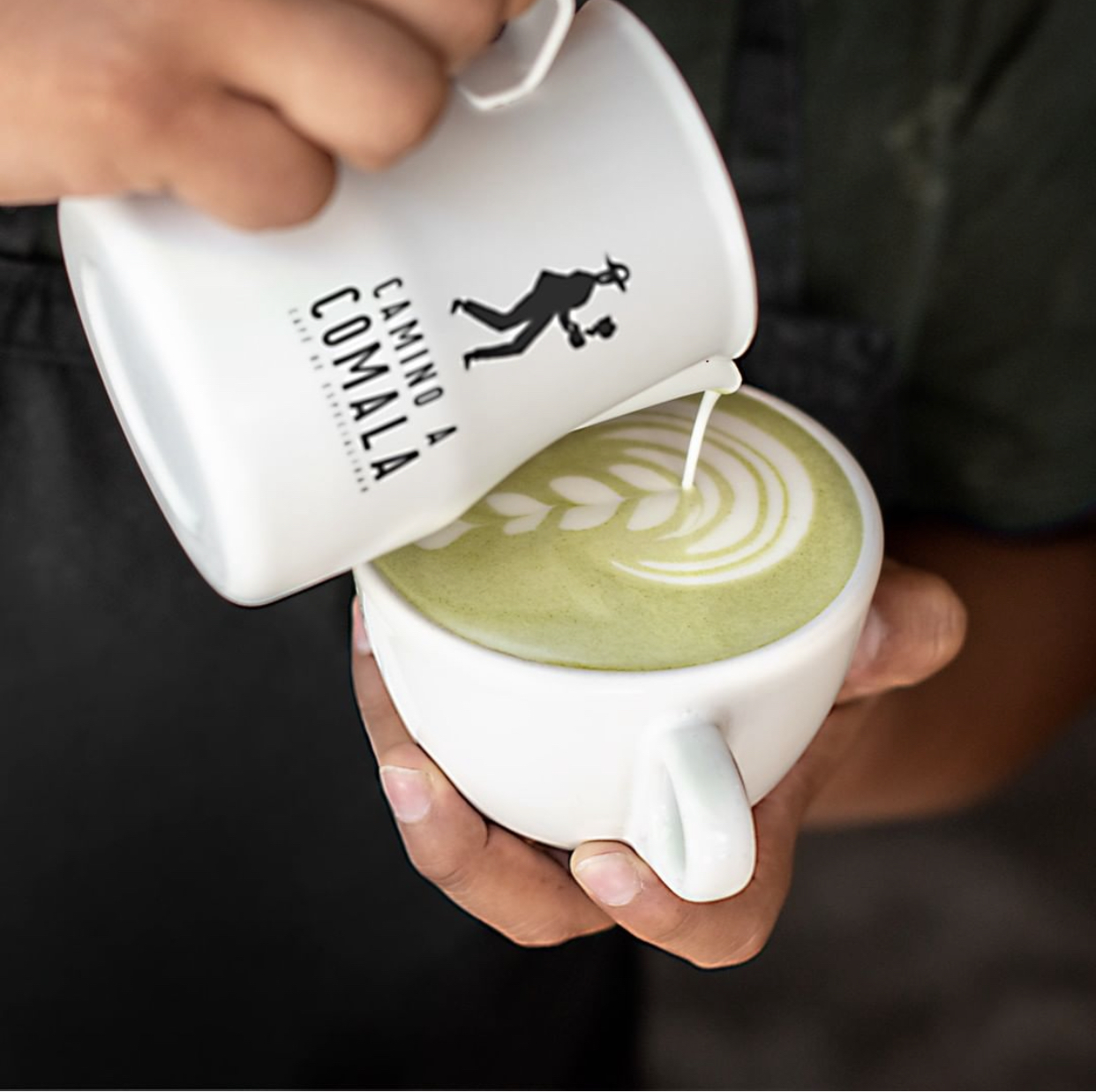
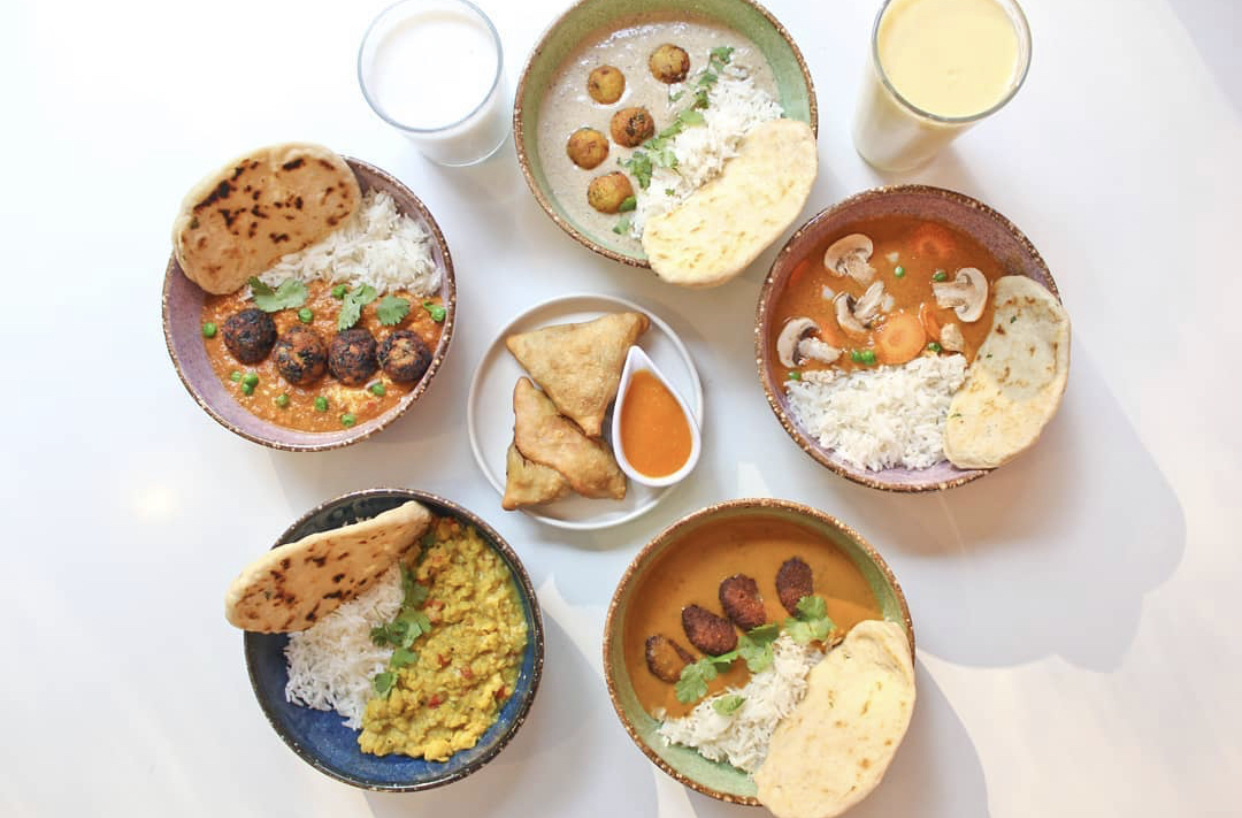
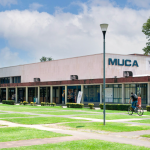
One of the UNAM's best loved and most central art museums . . .
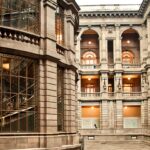
The National Art Museum in Mexico City's Centro Histórico is always going to be a holiday highlight.
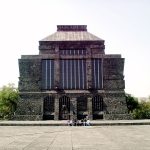
Initially intended as but one part of a City of the Arts, today's Anahuacalli Museum is a far more contemporary space than you might imagine.
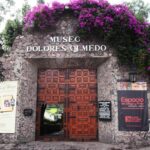
One of Xochimilco's best kept secrets, the Dolores Olmedo Museum is opulent and inviting.
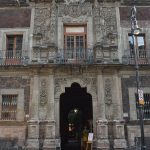
A modern graphic collection in an outstanding Baroque palace from the 18th century.